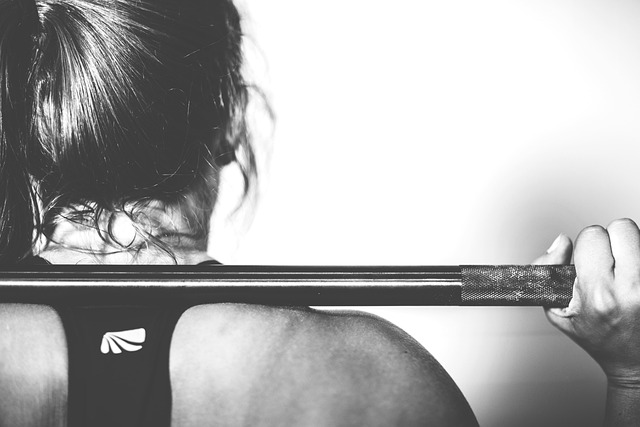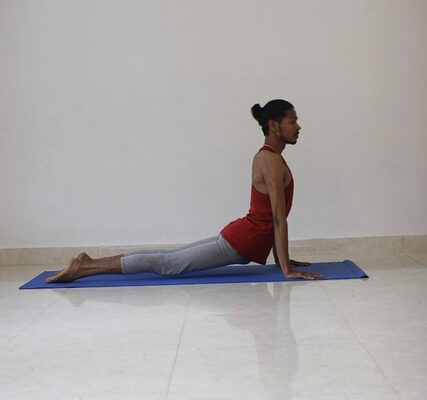We could all use a little more flexibility. The bulk of us spend the most of our days slumped over computer displays or smartphones. The end result? Poor posture, stiff joints, tense muscles, and lingering aches are all symptoms of poor posture.
Being able to touch your toes is only one aspect of becoming more flexible. It is about increasing your quality of life, decreasing daily aches and pains, and being able to participate in activities you enjoy without restriction.
If you want to become more adaptable, you’ve come to the correct place. Let’s learn how to improve your flexibility and the finest stretches to add into your regular routine in the sections ahead.
Understanding the Concept of Flexibility
“Flexible,” according to Merriam Webster, means “able to withstand strain without becoming permanently harmed.” This definition accurately captures the essence of what it takes to be a flexible human: Your muscles should be able to withstand tension (stretching) without being injured. The human body is designed to be supple, with elasticity in some situations and strength and stability in others.
Flexibility is defined physiologically as “the ability of a joint or group of joints to move through an unconstrained, pain-free range of motion.” This means that your muscles and joints work together to reach the positions required for performance, whether it’s for daily tasks, workouts, or recreational activities.
For example, if your profession needs you to reach up high and place boxes on shelves, you will need flexibility in your shoulders, arms, and back. Your hips, knees, ankles, and spine need to be flexible to achieve the proper squat position.
Reaching up overhead and lowering into a squat would be painful and uncomfortable without sufficient flexibility. You may not even be able to obtain those employment if you have very restricted flexibility.
Stretches for the Lower Body
Now that you understand what it means to be flexible, you can discover how to become more flexible. These lower-body stretches are among the greatest, and they’re simple to add into your daily or weekly stretching practice.
Folding Forward
The forward fold, also known as the toe-touch or standing forward bend, is the simple (yet difficult) movement of bending over and touching your toes or the floor. Toes should be able to be touched without curving the spine or shoulders, and without pain in the back of the legs.
Pigeon Pose
Pigeon pose is a famous yoga stretch, but you can do it even if you don’t practice yoga. Pigeon posture, when done correctly, opens up the hips, inner thighs, glutes, and lower back.
Butterfly Stretches
Tight inner thighs (hip adductors) might prevent you from doing various actions, including squats, lunges, deadlifts, and even hiking or walking. Add the butterfly stretch to your workout to help with tight inner thighs. It will stretch your hip adductors and increase your range of motion in most leg motions.
Ankle Stretches
Many people have extremely tight ankles without even realizing it. Your ankles may not come to mind when evaluating your total flexibility, yet they play a significant part in your ability to squat, lunge, rotate, run, and stroll. So it’s critical to maintain them!
One effective method is the knee-to-wall stretch, which requires you to contact your knee to the wall without lifting your heel off the ground.
To give it a shot, take these steps:
- Stand about 6 inches away from the wall, facing it.
- Take a stepback with your left foot as if preparing to lunge.
- Maintain a six-inch distance between your right foot and the wall.
- Maintain a flat right heel on the ground and force your right knee against the wall.
- A stretch should be felt in your right heel, ankle, and calf.
Repeat two to three times for a total of 30 seconds. Then, switch to your opposite leg.
The World’s Greatest Stretch
This dynamic flexibility motion, dubbed “the world’s greatest stretch,” loosens up frequent issue areas such as the hips, hamstrings, and spine. Follow these steps to perform the world’s largest stretch:

1. Place your feet in a low lunge position on the floor.
2. Place your right knee on the floor, with the top of your foot on the ground. Plant your left foot forward, making a right angle with your knee.
3. Push your hips forward until you feel light pressure on the front of your hips.
4. Place both hands inside your left ankle on the ground.
5. Raise your back knee off the ground (keep your hands on the floor). If this is too difficult, stay here and skip step 6.
6. Lower your left elbow to the ground if you feel uncontested at step 5. Lower both elbows to the ground for an added difficulty.
7. Lift your left arm up and rotate toward your left leg from step 5 or 6. You should be able to feel the rotation in your spine.
8. Put your left hand or elbow back on the ground.
Rep the circular action five times before switching sides.
Upper Body Stretches That Work
Here are a few of the best upper body stretches.
Thread-the-Needle
Gentle thread-the-needle stretching increases flexibility in the shoulders, neck, and upper back. It’s a stretch for beginners that you can do slowly. You can also change it to a static or dynamic stretch based on how you feel.
The thread-the-needle stretch is performed as follows:
- Position yourself on all fours in a tabletop position, with your hips perpendicular to your knees and your shoulders perpendicular to your wrists.
- Raise your left arm and fix your focus on it.
- Then, using this arm, sweep it between your right arm and right leg.
- Lower your upper body into the mat, carpet, or floor and extend your upper back and shoulders.
- Keep your hips and lower body up until you feel your back and shoulders feel stretched.
- Hold the position for a few seconds or up to a minute if you have the time.
- Unthread yourself and swing your left arm up again, following your left hand with your gaze.
Repeat on the opposite side.
Seated Clasp Neck Stretch
If you have neck tightness and soreness, you should attempt the seated clasp neck stretch. This stretch may be done anywhere and requires no equipment. This stretch helps neck pain in the near term and increases range of motion in the long run.
The seated clasp neck stretch is performed as follows:
- Place yourself on the floor or in a chair.
- Maintain a firm core, draw your shoulders back and down, and keep your back straight. Maintain a high chest.
- Bring your hands behind your head and interlock your fingers to form a clasp.
- Place your clasped hands behind your head.
- Push your head back until you feel a stretch in the back of your neck.
Hold for 45 to 60 seconds before returning to a neutral position.
Stretching the Anterior Shoulders
Tight shoulders are typical in those who sit all day due to poor posture. The anterior shoulder stretch is a relaxing stretch that will open up your shoulders and chest. What’s the best part? It’s suitable for beginners and may be done at any time and from any location.
Pass-Through PVC

This is a more advanced stretch movement for the shoulders and upper back. If you’re new to stretching, use caution and have a trained personal trainer observe you.
PVC pass-throughs allow for healthy and complete joint movement in the shoulders, as well as the cervical spine and thoracic thoracic and cervical spine, when done correctly.
PVC pass-throughs require a piece of PVC pipe. A broomstick can also be used.
Once you have your equipment, proceed as follows:
- Take a firm grip on the PVC pipe.
- Raise your arms above your head slowly and spin your shoulders to bring the PVC behind you.
- Return your arms to the front of your body to complete the movement.
How to Establish a Stretching Routine
You understand that stretching can help you become more flexible, but how often and when should you stretch? If you currently exercise on a daily basis, it is beneficial to tailor your stretching practice around your training schedule.
For example, if you intend to conduct a leg workout, you can include dynamic lower-body stretches in your warm-up and static leg stretches in your cool-down. Upper body workouts are the same way. You can also try stretching your upper and lower body at the start and conclusion of each day.
To Conclude
The most important thing to remember when trying to get more flexible is to avoid overstretching, which can cause pain or injury.
Listen and respect your body’s range of motion and don’t push yourself too hard when you attempt to develop your flexibility.

